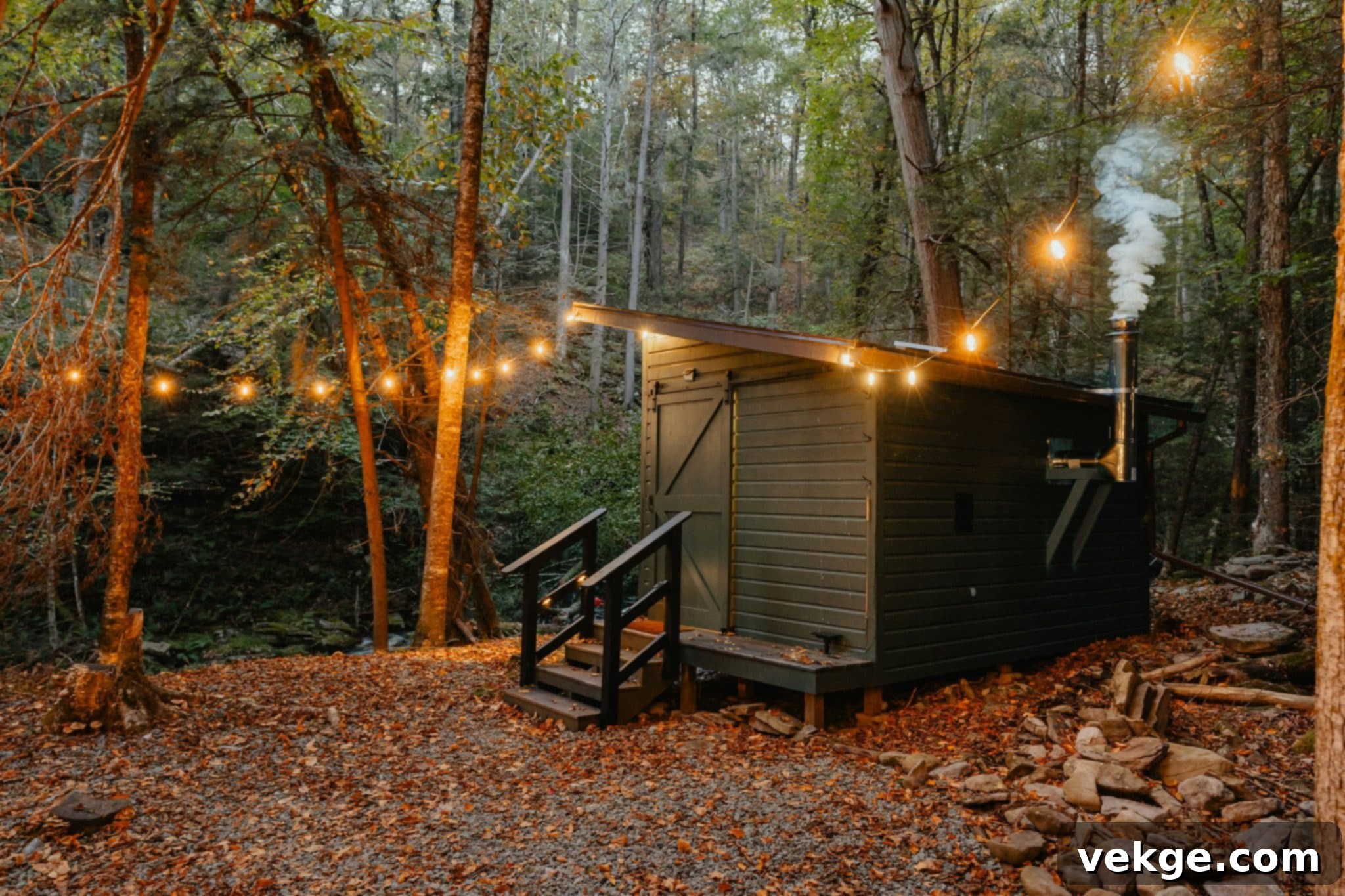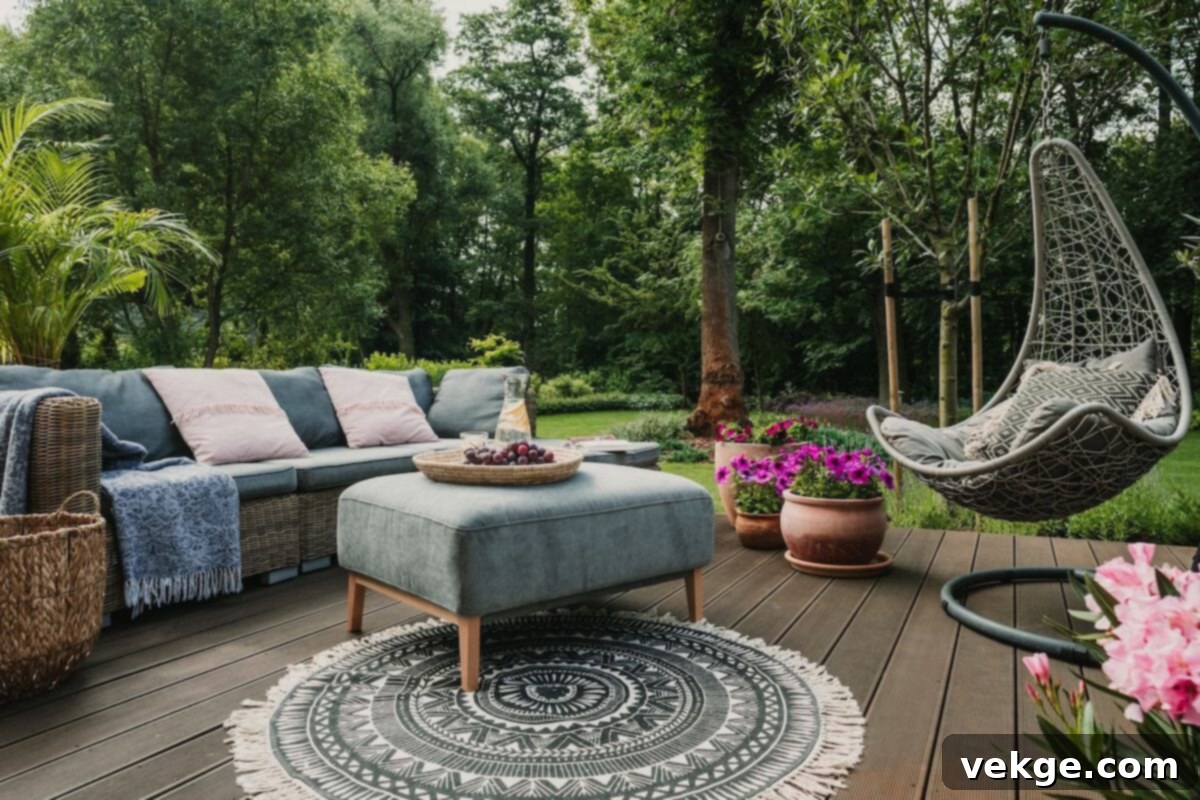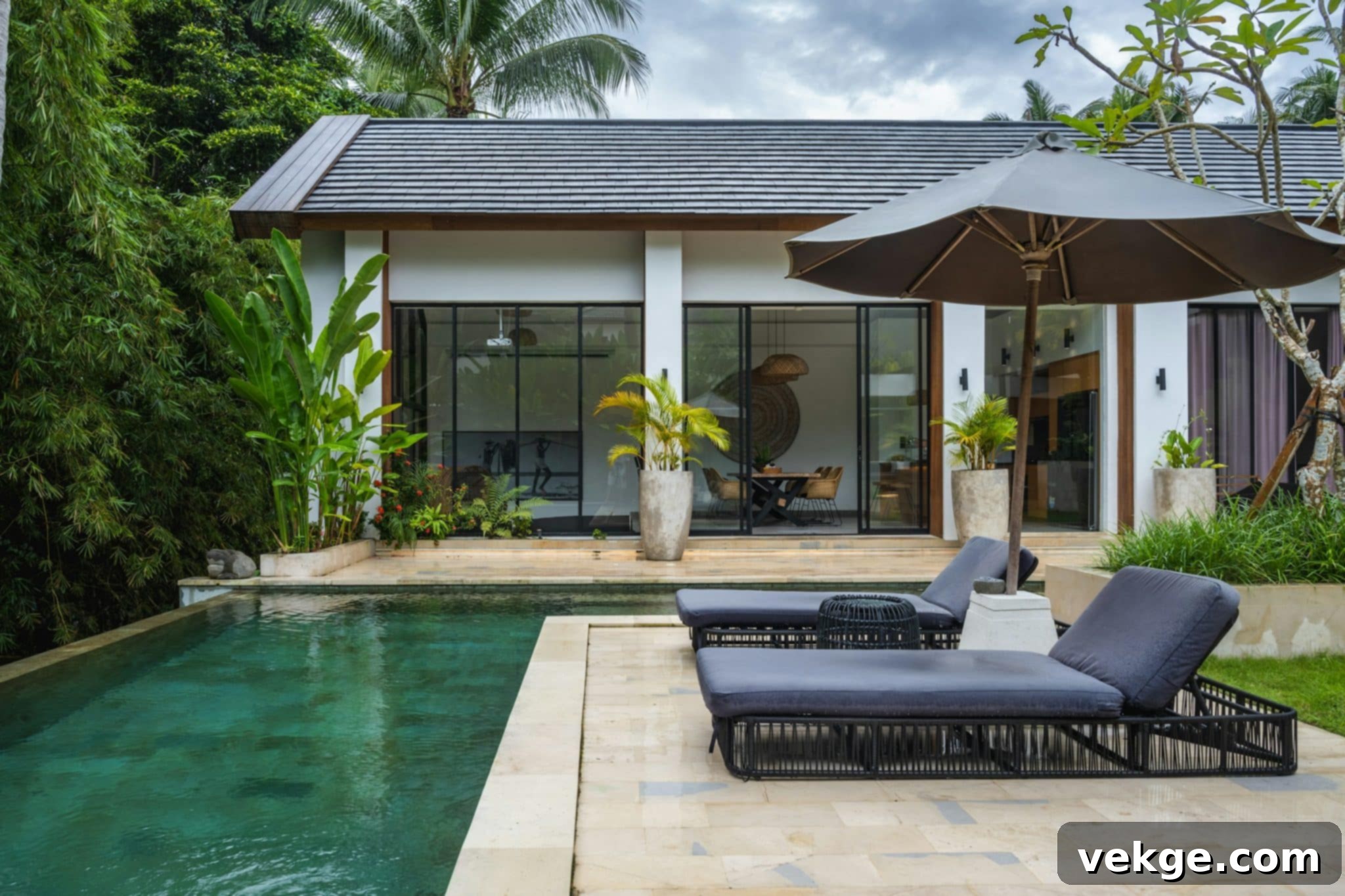Transform Your Open Field: A Comprehensive Guide to Creating Your Dream Outdoor Sanctuary
Do you often gaze upon your open field or undeveloped backyard space and envision the incredible possibilities? Imagine a sophisticated garage, a sleek wooden deck perfect for entertaining, a tranquil pond, or a chic gazebo where you can unwind on sunny afternoons. The untapped design potential of an open field is truly immense, offering a blank canvas for your deepest outdoor living dreams.
Transforming an empty expanse into a personal oasis requires thoughtful planning and a structured approach. By crafting a comprehensive plan with a solid framework, you can turn your open field into the relaxing sanctuary you’ve always dreamt of. This detailed guide will walk you through every step of the process, helping you create an outdoor living space that seamlessly blends style, comfort, and functionality, ultimately enhancing your home’s value and your quality of life.
Defining Your Vision: Project Scope and Planning

The crucial first step in any successful open-field transformation is clearly defining your project’s scope. This initial phase ensures that your vision aligns perfectly with your field’s size and characteristics, helping you avoid costly complications and mid-project changes. A well-defined scope acts as your roadmap, guiding every subsequent decision.
Here are some essential factors you should meticulously consider when establishing your project’s scope:
- The Main Feature: What will be the focal point or standout structure of your outdoor space? Will it be an elegant wooden or metal gazebo for relaxation, a robust shed for storage, an expansive pergola for shaded dining, a dedicated outdoor kitchen for culinary adventures, or perhaps a serene water garden? Clearly identifying this primary element will influence much of your design and budgeting.
- Project Budget: How much are you realistically willing to invest in this transformation? Whether you’re planning a modest $2,000 upgrade or an extensive $10,000+ overhaul, establishing a clear budget early on is paramount. This includes not just materials and labor, but also permits, unforeseen expenses, and potential professional design fees. A detailed budget will help you prioritize features and make informed choices.
- Size of the Open Field: The actual dimensions of your open field dictate the scale and types of structures and landscaping you can incorporate. Understand the exact area you have to work within, accounting for setbacks, property lines, and existing features. This will help you plan for zones (e.g., a dining area, a lounge area, a play area) and ensure proper flow.
- Turnaround Time: How quickly do you need or want the project completed? Consider the various phases of construction, potential delays due to weather, material availability, and the schedules of any contractors you plan to hire. Planning around seasonal weather can be critical, as certain tasks are best performed in specific conditions. Additionally, factor in time for obtaining necessary permits and inspections, which can sometimes be a lengthy process.
- Local Regulations and Permits: Before any digging or building begins, research local zoning laws, building codes, and homeowner association (HOA) rules. Many outdoor structures, fences, and utility installations require specific permits. Neglecting this step can lead to fines, forced demolition, or project delays.
Designing Your Dream: Features of Your Open Field Redesign
Once you’ve clearly defined the scope, it’s time for the truly enjoyable part: selecting the features that will bring your open field redesign to life. This is where your creative spirit can truly flourish, transforming a simple concept into a vibrant, functional, and aesthetically pleasing outdoor haven. Consider these innovative elements to personalize your space:
- Outdoor Lighting Ideas: Lighting is essential for both functionality and ambiance, allowing you to enjoy your space well into the evening. Explore various options such as spotlights to highlight architectural features or beautiful plantings, elegant lanterns for ambient glow, and practical pathway lighting for safety and navigation. Consider LED options for energy efficiency and smart lighting systems for convenience. Explore more outdoor lighting ideas to create the perfect mood.
- The Structure: Beyond the main feature, what other structures will enhance your space? An expansive garage can serve as a workshop or extra storage, a graceful pergola offers dappled shade and a framework for climbing plants, a dedicated greenhouse allows for year-round gardening, or perhaps a chic pool house for changing and entertaining. Each structure adds unique functionality and aesthetic appeal.
- Landscaping: This encompasses both softscaping (living elements) and hardscaping (non-living elements).
- Softscaping: Think lush flower beds bursting with color, strategically planted trees for shade and privacy, and diverse shrubs that add texture and form. Consider native plants for low maintenance and local wildlife support.
- Hardscaping: This includes decorative fencing for privacy and demarcation, elegant gravel pathways, stone patios for gathering, and retaining walls for tiered garden beds. These elements provide structure and define different areas within your open field.
- Seating Arrangements: Comfort and functionality are key. Choose seating that invites relaxation and social interaction. Options range from classic benches for quiet contemplation, charming swings for playful moments, plush outdoor sofas for lounging, or whimsical hammocks for ultimate relaxation. Consider weatherproof materials and comfortable cushions.
- Infrastructure and Utilities: Often overlooked but critically important, planning for utilities early can save significant headaches later. This includes ensuring a reliable water supply for irrigation and water features, adequate electricity for lighting, outdoor kitchens, and entertainment systems, and potentially heating or cooling systems for extended seasonal use. Proper planning for these elements is vital for a truly functional outdoor living space.
Bringing It To Life: Labor, Materials, and Budget Management
Once your vision is clear and your features are chosen, the practical considerations of labor and materials come into play. This phase is about translating your design into reality, ensuring you have the right resources and expertise.
DIY vs. Professional Contractors
A crucial decision is whether you will tackle the project yourself or hire professionals. Each route has its advantages and disadvantages:
- Do It Yourself (DIY): Opting for DIY can save on labor costs and offers a deep sense of accomplishment. It’s often suitable for smaller projects like planting flower beds, building simple raised gardens, or installing decorative lighting. However, it requires significant time, physical effort, and specific skills. Miscalculations or improper execution can lead to costly mistakes.
- Hiring Professionals: For larger, more complex projects involving structural construction, extensive landscaping, or utility installation, hiring contractors is often the most efficient and reliable choice. Professionals bring expertise, specialized equipment, and can often complete the job to a higher standard and within a shorter timeframe. For example, when getting landscaping work done, the average price for labor typically ranges between $50 and $100 per hour, though this can vary significantly based on your location, the contractor’s experience, and the complexity of the job. While an initial investment, professional help ensures adherence to building codes, proper site preparation, and a durable, high-quality finish. Don’t hesitate to seek multiple quotes and check references.
Sourcing Your Materials
Regardless of whether you choose DIY or professional assistance for the construction, you will need to procure the necessary materials for your project. Material selection impacts not only the aesthetics but also the durability, maintenance, and overall cost of your outdoor sanctuary. While specific needs vary by project, here are some common categories:
- Hardscaping Materials: These form the backbone of your outdoor design. Options include sturdy bricks for pathways and patios, versatile concrete for foundations and expansive surfaces, elegant natural stone for a timeless look, or interlocking pavers for a variety of patterns and colors. Each material offers different aesthetic qualities, durability, and cost implications.
- Soil and Amendments: The foundation for any healthy plant life. Understanding your existing soil type (e.g., clay soils, sandy soils, or silt soils) is critical. You may need to amend it with compost, topsoil, or specific nutrients to ensure proper drainage and fertility for your chosen plants. A soil test can provide valuable insights.
- Construction Materials: For structural elements like gazebos, pergolas, or sheds, you’ll need robust construction materials. This could include durable steel for modern designs or structural integrity, natural stone for retaining walls or outdoor kitchens, or various types of wood (pressure-treated for decks, cedar or redwood for aesthetic appeal and natural resistance) for a classic, warm feel.
- Extras and Fasteners: Don’t overlook the smaller, yet critical, items that hold everything together and provide the finishing touches. This includes a range of nails, screws, and bolts for structural assembly, specialized glues and adhesives for bonding, and caulk or sealants for weatherproofing and a polished finish. These seemingly minor items are essential for the longevity and safety of your construction.
Laying the Groundwork: Essential Site Preparation
Site preparation is a non-negotiable, fundamental part of every open-field upgrade. This meticulous phase guarantees a smooth construction process, prevents future problems, and provides a stable, lasting foundation for your entire project. Rushing this step can lead to significant issues down the line.
When preparing your open field, these are some of the critical tasks you’ll need to undertake:
- Evaluate the Field Thoroughly: Beyond just size, this involves a detailed assessment of the land. Analyze soil composition, drainage patterns (where water naturally flows and collects), sun exposure throughout the day, prevailing wind patterns, and the presence of any existing underground utilities. Ensure the land is suitable for the scale and weight of the structures you plan to build. Consider hiring a surveyor for precise boundary and elevation information.
- Design a Detailed Blueprint: Before breaking ground, create a precise blueprint or landscape design. This outline should clearly define how much space each element will occupy, including the main structure, pathways, planting beds, and utility lines. Consider adding distinct zones for different activities (e.g., an entertainment zone, a quiet reflection zone, a children’s play area) and account for any additional features that may be combined with your main element. Professional landscape designers can create 2D and 3D visualizations, helping you refine your vision and anticipate challenges.
- Clear the Site Effectively: This step involves removing any obstacles that could impede construction. This isn’t just about moving garden furniture; it includes clearing overgrown vegetation, removing rocks, debris, old structures, and even stumps. Proper clearing ensures a clean slate and safe working environment. For larger areas or heavy vegetation, consider renting equipment or hiring professionals.
- Prepare for Utilities and Drainage: Determine precisely what areas will require power (for lighting, outdoor appliances, tools) and water (for irrigation, water features). Get in touch with a qualified electrician and plumber early in the process. They can analyze your project’s needs, advise on trenching, conduit placement, and ensure all electrical and plumbing work complies with local codes and safety standards. Furthermore, plan for proper grading and drainage to prevent water pooling, which can damage foundations and landscaping. This might involve creating gentle slopes, installing French drains, or strategically placing permeable surfaces.
The Finishing Touches: Adding Furniture and Decorative Elements

Once the major construction is complete, adding thoughtfully chosen furniture and decorative elements is the perfect way to finalize your open-field project, imbuing it with personality, comfort, and undeniable aesthetic appeal. These details transform a functional space into a truly inviting sanctuary.
You might opt for minor enhancements that significantly impact the ambiance, such as installing a cozy fire pit for evening gatherings (ensuring proper safety clearances and materials), or a charming water feature like a bubbling fountain or a peaceful koi pond, which adds soothing sounds and visual interest. However, to truly cultivate the relaxing sanctuary you envision, investing in comfortable and stylish pieces of furniture is key. Imagine plush outdoor couches and armchairs for lounging, elegant tables for al fresco dining, comfortable sun loungers for soaking up rays, or even whimsical hanging chairs for a touch of bohemian charm. These pieces define areas and invite you to settle in and enjoy your new space.
Don’t underestimate the power of small accessories to complete the look. These delightful finishing touches can dramatically enhance the overall feel. Consider adding weather-resistant outdoor carpets or rugs to define seating areas and add warmth underfoot, vibrant hanging baskets brimming with colorful flowers, elegant climbing plants adorning pergolas or trellises, or gentle hanging wind chimes that provide a serene auditory backdrop. These elements add layers of texture, color, and sensory delight, making your outdoor living space truly unique and perfectly tailored to your taste.
Embrace the Potential: Your Open Field Awaits Transformation
If you possess an open field or an undeveloped expanse on your property, you have a remarkable opportunity to create something truly special. Choosing this area for a grand outdoor project isn’t just about expanding your living space; it provides an invaluable opportunity to craft a secluded haven where you can relax, entertain, and fully enjoy your free time. Beyond personal enjoyment, such a transformation significantly adds curb appeal and value to your home, making it a wise investment.
By diligently following the comprehensive steps outlined in this guide—from careful planning and design to meticulous site preparation, material selection, and the final decorative touches—you will be well-equipped to build a fantastic outdoor living place that exceeds your expectations. Remember, confidence is key, but so is knowing your limits. If you’re not entirely confident in taking on certain complex processes alone, do not hesitate to seek help and guidance from experienced contractors and landscape designers. Their expertise will ensure the project is executed safely, efficiently, and to the highest standards, resulting in the dream outdoor sanctuary you’ve always wanted. Embrace the journey and prepare to enjoy your stunning new outdoor oasis for years to come.
